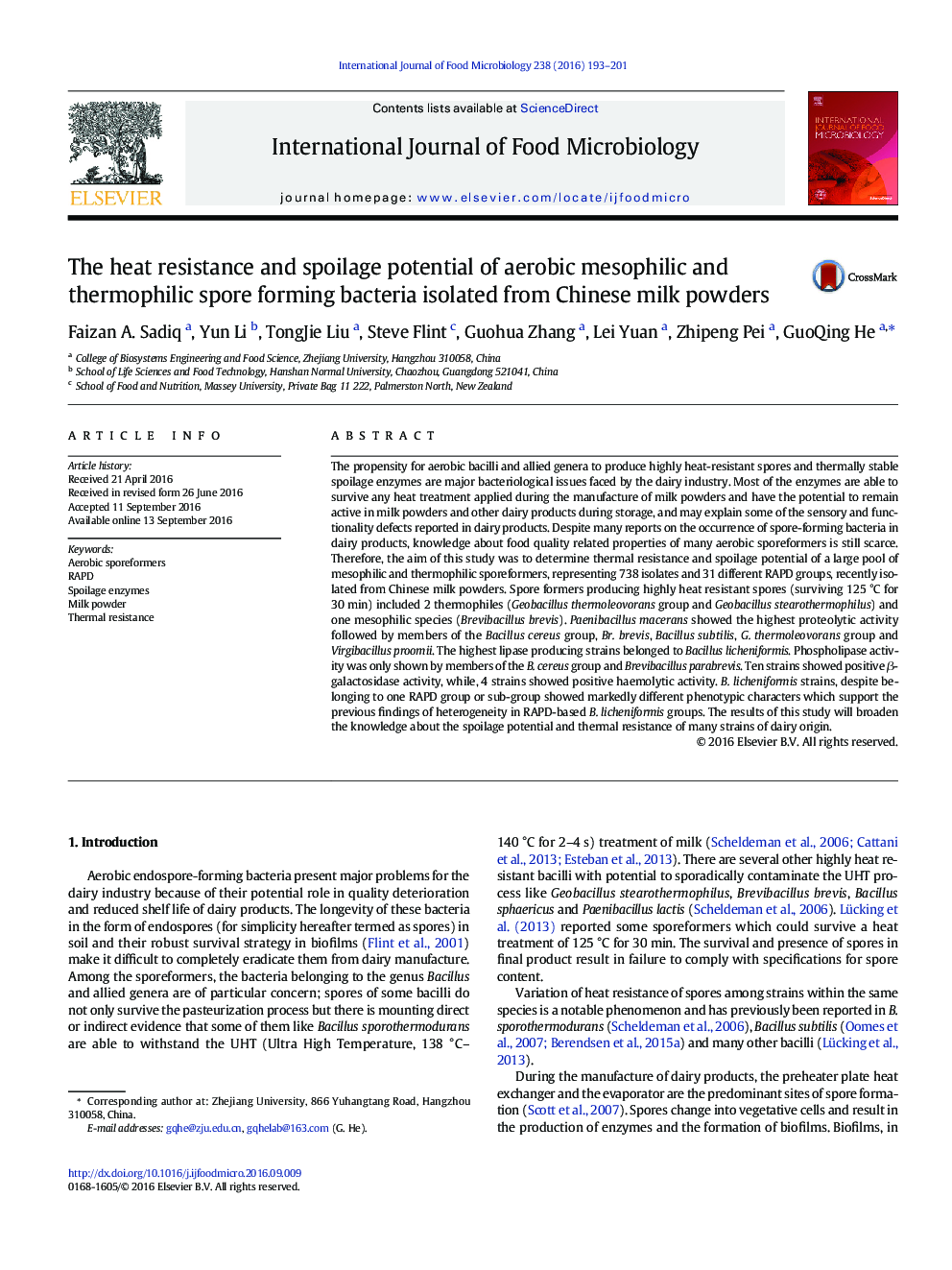| کد مقاله | کد نشریه | سال انتشار | مقاله انگلیسی | نسخه تمام متن |
|---|---|---|---|---|
| 4366133 | 1616545 | 2016 | 9 صفحه PDF | دانلود رایگان |
• Heat resistance and spoilage potential of a wide range of mesophilic and thermophilic sporeformers have been determined
• Spores of Geobacillus thermoleovorans group and Geobacillus stearothermophilus survived the heat treatment of 125 °C for 30 min
• Paenibacillus macerans isolates are most proteolytic among sporeformers investigated
• Members of the Bacillus cereus group are able to produce phospholipases, haemolysins, proteases and lipases
• The phenotypic similarity within the same RAPD groups of Bacillus licheniformis is questioned
The propensity for aerobic bacilli and allied genera to produce highly heat-resistant spores and thermally stable spoilage enzymes are major bacteriological issues faced by the dairy industry. Most of the enzymes are able to survive any heat treatment applied during the manufacture of milk powders and have the potential to remain active in milk powders and other dairy products during storage, and may explain some of the sensory and functionality defects reported in dairy products. Despite many reports on the occurrence of spore-forming bacteria in dairy products, knowledge about food quality related properties of many aerobic sporeformers is still scarce. Therefore, the aim of this study was to determine thermal resistance and spoilage potential of a large pool of mesophilic and thermophilic sporeformers, representing 738 isolates and 31 different RAPD groups, recently isolated from Chinese milk powders. Spore formers producing highly heat resistant spores (surviving 125 °C for 30 min) included 2 thermophiles (Geobacillus thermoleovorans group and Geobacillus stearothermophilus) and one mesophilic species (Brevibacillus brevis). Paenibacillus macerans showed the highest proteolytic activity followed by members of the Bacillus cereus group, Br. brevis, Bacillus subtilis, G. thermoleovorans group and Virgibacillus proomii. The highest lipase producing strains belonged to Bacillus licheniformis. Phospholipase activity was only shown by members of the B. cereus group and Brevibacillus parabrevis. Ten strains showed positive β-galactosidase activity, while, 4 strains showed positive haemolytic activity. B. licheniformis strains, despite belonging to one RAPD group or sub-group showed markedly different phenotypic characters which support the previous findings of heterogeneity in RAPD-based B. licheniformis groups. The results of this study will broaden the knowledge about the spoilage potential and thermal resistance of many strains of dairy origin.
Journal: International Journal of Food Microbiology - Volume 238, 5 December 2016, Pages 193–201
